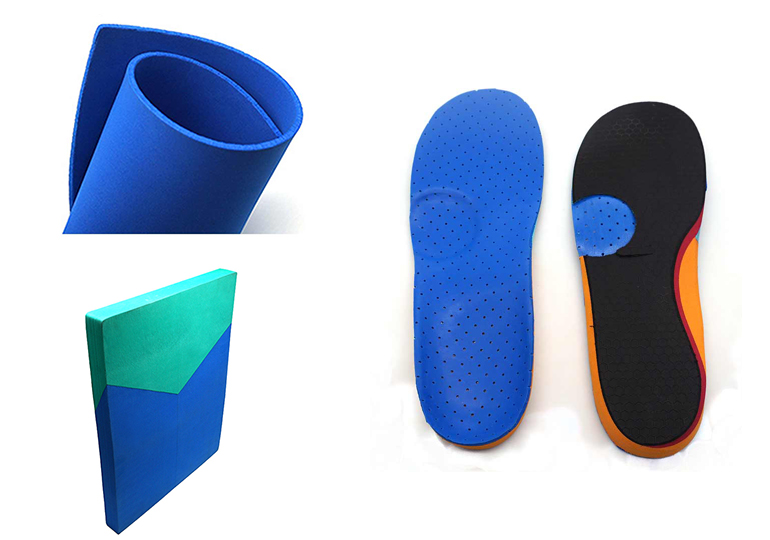The midsole is one of the most frequently asked questions while purchasing leather and other shoes. When it comes to shoe manufacturing, a foam or rubber form known as EVA is used by a variety of companies. EVA foam is also said to be more durable than traditional sneaker foam. What is EVE’s purpose and how does it feel to utilize it?

EVA is perfect for shoes where weight is important (you can’t put a thick midsole on a summer shoe, for example), but it’s also exceptionally light and low density. This contributes to its excellent damping qualities, which are critical for footwear components including soles, soles, and shoelaces.
This does not mean that EVA soles will endure indefinitely; nonetheless, over time and with continued usage, every EVA-based shoe product loses some of its absorption capabilities and, as a result, provides less and less support for the foot. Because EVA goods lose part or all of their moisture qualities with time of continuous usage, they do not have to last “forever.”
Changing shoes (particularly running shoes) every 3 to 6 months is the best strategy to avoid flattening the EVA midsole. You can avoid ejecting your favorite shoes and compressing your footbed by replacing the insole.
When walking or jogging, the additional EVA insole can keep your running and hiking shoes from becoming too soft and heavy to wear. While you may not want to take off your running shoes while walking, padding is essential if your joints require it. At the end of the day, you simply know that EVa is a fantastic way to preserve your feet while also adding a little spring to your stride. It cannot be removed from the shoe, but because the shoes can supply additional support, it may assist you in becoming exactly what you require.
Use it to absorb shocks – absorb, shock-absorbing, or in combination with other shock absorbers like rubber soles. It can be used to replace the shock absorption in your running shoes or to add more cushioning to your hiking shoes.
The midsole of a shoe can be made in a variety of ways, and PU and EVA can be mixed to create a comfortable and durable shoe. The cost of making a specific type of EVA insole, as well as the amount of material utilized, varies from shoe to shoe and shoe to shoe.
The tougher the EVA becomes as more raw material is poured into the mold, and the softer the EVA becomes as more blowing agents are added. This isn’t to imply that traditional boots aren’t comfortable; it’s simply that the traditional midsole takes a long time to adjust to the contour of the foot, thus the IDEASTEP will never be as excellent as EVA-based boots in absorbing shock. Rubber EVA soles are easy to break in, but if you spend a lot of time on your feet, you’ll notice that they become more unpleasant as time goes on. A shoe with a PU sole will last significantly longer, but an EVE will flatten out over time.
Some consumers, particularly runners, claim that their shoes will turn flat after a while, however the EVA tends to shrink over time. This is due to a lost recovery that should ordinarily be replenished once a certain amount of time has passed.
The greatest material and product, not necessarily the most expensive, are used in EVA insoles. Rubber has an intermediate sole, which necessitates correct treatment, but it isn’t the only consideration.
Although EVA is not the ideal material for outside foot support, it is an outstanding midsole for trail shoes. EVA soles provide a lot of benefits, and I think they make a far more comfortable shoe than rubber soles. They are made of a more durable material than rubber, such as carbon fiber, but they do not provide the same level of protection.
To provide comfort and flexibility, a variety of midsole, outsole, and insole shoes can be employed (comfort is of course a subjective term). EVA is popular because it resembles rubber, but it also has the benefit of being created with a substance that adds softness or flexibility. On the other hand, it is widely acknowledged as one of the best materials for the external support of hiking boots. It’s a nice alternative to rubber soles, although it’s not quite as comfortable.
This material can also be utilized to make shoes that are functional but do not affect the environment when they are no longer in use.
A light pair of shoes would be a wonderful choice if you were running fast, but if you were walking for a few hours, an EVA outsole would be far more pleasant than a heavy shoe. The midsole should be comfortable, akin to a well-worn running shoe or a well-fitting shoe. Midsole: For the lightest running shoes and the most comfortable walking shoes, this would have been an excellent choice.
